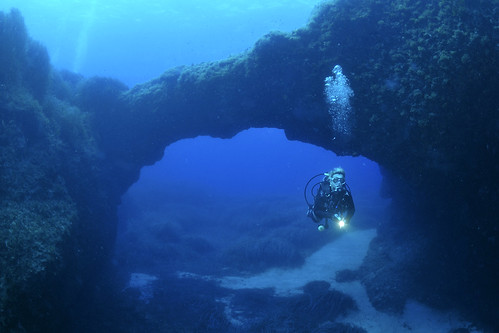I'm not sure I am following what you are saying here. The way I read this, you are saying when divers come out of your OW class, they are certified to 100 ft because you have provided them the skills to be able to do that. (Did you actually take them on a 100 ft dive?) But then you say they shouldn't attempt something like that even in their first 20 dives. If they want to dive to 100 ft sooner than 20 dives, they need to come back to you for more training. Why? What else are you going to train and teach them that would allow them to go to 100 ft sooner than 20 dives? You claim they already have the skills for that. The bottom line is, they either have the skills and knowledge to do the dives to that level or they don't. If they need more training from you to dive to a depth of 100 ft before 20 dives, then you haven't given them the knowledge and skills to do the dives like you claim.
You obviously are not familiar with the YMCA Scuba Program or SEI that came from it when the Y closed the program. YMCA standards and SEI standards have always mandated that OW divers be trained to the maximum sport diving limit of 100 feet. This is why we include things like rescue skills, emergency deco planning using the US Navy Air Deco Tables, and require 16 hours in the classroom and pool. The skills and task loading mandated in the training was and is designed to allow the diver to dive to the recreational sport diving limits as they gain experience by diving independent of professional instruction and guidance once they have their OW diver card.
Early on in organized dive training there were no so called specialties other than the SLAM rescue course. "Specialties" were a money making scheme that one agency set up. In order to be competitive all the others had to follow suit. It was Diver, Instructor, Instructor Trainer, that was it. The SLAM Rescue course was developed with thinking similar to lifeguard training as more divers were entering the water and it was recognized that the local EMS was not always a phone call and ten minutes away. Plus there are some things specific to diving that the average emergency responder just would not be familiar with.
The caveat to come back for more training if they want to get to deeper depths sooner is simple. It takes some time to build up to deep dives on one's own. You may not realize how narced you are if you try to go to 100 feet on dive 6. Or just how fast your gas actually goes. Having an instructor to oversee and give tips, watch reactions, and check judgment is just a safeguard. Some do not want to take the time to go five feet deeper at a time and actually learn how their body reacts and how they respond. They want to accelerate the process. That is where the additional training comes in.
They have the knowledge and the skills necessary to go to 100 feet right out of the OW class. Just as any kid with a drivers license has the knowledge and skills to get on the freeway and if he wants to zip along at 70 mph. As long as nothing goes wrong. If it does however he is liable to be in a world of hurt. So he needs to build up to that 70 mph cruising speed and get some experience responding to changing conditions over time. Or she can take an upper level defensive driving class and get there sooner. I have not seen many of those but here in PA we have free upper level motorcycle courses. You take the beginner course designed for those who have never been on a bike before. great course even if you have! Then you can just ride along and gain experience over a few seasons. Or you can take the advanced course on your own bike and learn stuff that people riding for years have not experienced. I want to take it but just don't have the time right now.
Bottom line is they have the knowledge and skills. What they don't yet have is the experience and judgment that comes from a number of dives. That is where either time or experience gained with an instructor who can accelerate the process comes in. That is what we tell them. You can gain the experience needed to put those skills and knowledge together on your own or with an instructor. I never said they could not go to 100 ft on dive 10. That is their business if they choose to. Whether it is a smart choice is debatable depending on the diver.
As to your question as to what else am I going to train them on? Hmm, use of a stage bottle to add to their available gas supply for emergency - not in the OW class. Wish it was. Shooting a bag from depth in case they lose the anchor or mooring line. Also not in the OW class. Unless the student tells me they plan to go on drift or boat dives. Then I put it in. Use of lights for communication deep since locally it can be like a night dive at high noon. More rescue skills. No mask drills. Stuff they could get over time that is nice to have for deeper dives.







